Steemit Crypto Academy Contest / S1W1 - Favorite Blockchain Network by @phlexygee
Tell us about your favorite Blockchain network, its history, and why it's your favorite.
With no doubt, the blockchain technology has really contributed to improve the world financial system, by eliminating third parties in transactions and offering 24/7 financial services to people.
There are well renowned and reputation blockchain networks such as Bitcoin, Ethereum and Tron, but among them, my favorite blockchain network happens to be Avalanche.
Avalanche
Avalanche is an open-source blockchain platform for building dApps and customized blockchains.
Avalanche is undisputably the first decentralized smart contracts platform which is mainly built for the international finance system, with swift transaction finality.
dApp developers, including Ethereum can equally build on Avalanche, as the platform is an open-source.
AVAX is the native and utility token for Avalanche.
The consensus protocol of Avalanche is the main dichotomy between it and other blockchain networks, and I will ponder on it just after highlighting on the history.
History of Avalanche
Avalanche is a blockchain which was launched in 2020 by Ava labs, after raising $6 million on its ICO. The ICO of avalanche ended in the July of 2020 which was succeeded by the launch of avalanche within the same year, thus 2020.
Information about the emergence of the protocol was published in 2018 by Team Rocket. Later in 2020 a group of three researchers from the Cornell University, namely Emin Gün Sirer (a professor of engineering and computer science at the University), assisted by Maofan Ted Yin, and Kevin Sekniqi who were his doctorial students.
In march 2020, the Ava codebase for the avalanche consensus mechanism became an open-source, and therefore making it available to the general public.
Why Avalanche is my Favorite Blockchain Network
Avalanche is my favorite blockchain network simply because of its high scalability level, low transaction fees, and the ability to support many blockchain projects.
Avalanche has been able to conquer the blockchain trilemma, therefore giving hope and inspiration in the crypto arena.
The blockchain has been able to achieve security, scalability and decentralization concurrently without compromising any.
It is super-fast, thus highly scalable, and has a very low transaction fees, therefore eliminating the challenges that the early blockchain networks such as Bitcoin and Ethereum are facing.
Most people thought it was impossible for a blockchain network to have high scalability without sacrificing either security or decentralization, but Avalanche has proven that, blockchain network can do better, with its ability to finalize 4500 transactions per second (TPS).
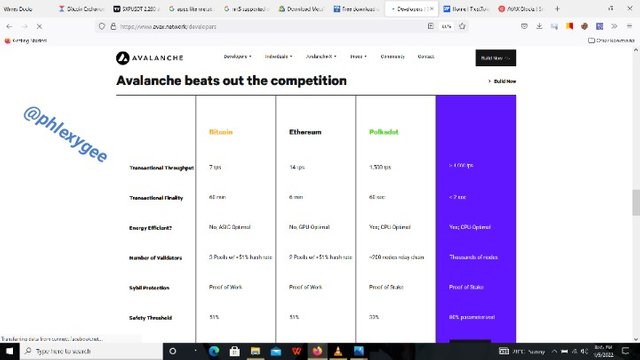 source This image highlights on the superiority of Avalanche in the blockchain arena.
source This image highlights on the superiority of Avalanche in the blockchain arena.
Avalanche has a high throughput and it competing with other financial systems such as Visa.
The Three Sub-Blockchains that Make-up Avalanche
The X-Chain, C-Chain and P-Chain (Avalanche)
The X-Chain, C-Chain and P-Chain blockchains are a three variety of blockchains that constitute the Avalanche blockchain network.
The amalgamation and utilization of these three separate blockchains by the Avalanche blockchain helps it to achieve a high level of scalability.
Thus, these hybrid blockchains helps Avalanche to defeat the concept of blockchain trilemma by ensuring pure decentralization, high security and a high level of scalability concurrently.
Avalanche has an average TPS of 4,500 and 2 seconds transactional finality period, with low transactional fees, and this is attained with the help of the three merged blockchains.
All the 3 sub-blockchains (X-Chain C-Chain and P-Chain) are validated and secured by the Primary Network (Avalanche).
The Primary Network is a special subnet, whiles all members of the custom subnets must be a member of the Primary Network by staking at least 2,000 AVAX.
Now let's take the three built-in blockchains that make up the Avalanche blockchain, one after the other, and throw more light on them.
X-Chain (Exchange Chain)
The X-Chain is a decentralized platform that serves the purpose of creating and trading digital assets on Avalanche.
AVAX is one asset traded on the X-Chain, and when a user issue a transaction to a blockchain on Avalanche, he or she pays a fee or commission in AVAX.
As a part of Avalanche, it uses the Avalanche consensus mechanism, and as an Exchange Chain, all digital assets are managed within it.
With the X-Chain, all nodes work in parallel, with the basic aim of verifying confirmations made by other validators.
In simple terms, the main purpose of the X-Chain is to create and exchange assets.
C-Chain (Contract Chain)
The C-Chain network uses the Snowman consensus mechanism, and it enables the creation of smart contracts using the C-Chain’s API.
This Chain allows dApp developers to create smart contracts for their projects, and they Use the Ethereum Virtual Machine to initiate these contracts.
It enhances the development of any Ethereum-compatible applications and assets with lower fees and faster transactions. Smart contracts for dApps, NFT's and ERC-Tokens are generated.
Over here, the nodes are works linearly, unlike that of the X-Chain where the nodes work in parallel.
dApp developers have the opportunity to utilize the AVAX token for smart contracts, and the token can as well be used to settle gas fees.
P-Chain (Platform Chain)
The P-Chain is regarded as the metadata blockchain on Avalanche, and it coordinates validators, keeps track of active subnets, and enables the creation of new subnets.
Similarly to the C-Chain, the P-Chain implements the Snowman consensus protocol.
On the P-Chain, validators stake the AVAX token in order to secure the network.
The P-Chain API allows its clients to create subnets, add validators to subnets, and create new blockchains as well.
The P-Chain has the main purpose of coordinating validators and creating further subnets.
In addition to the above explanations, all the three blockchains are default on Avalanche in terms of their purpose, and we should note that the AVAX token can be transferred from each of the Chain to the other by using the Avalanche noncustodial Wallet.
consensus mechanism is a set of certain rules and functions that makes it possible for validators to reach to an agreement, and ensure effective and efficient function of the blockchain network.
Probably, there are three approaches that have been created and implemented throughout history. Thus the Classical consensus, Nakamoto consensus and Avalanche.
Since I am interested in Avalanche, I will ponder on Avalanche and its sub-consensus (Snowman consensus)
The Avalanche Consensus Protocol
There is a difference between the Avalanche consensus protocol and other consensus mechanisms such as PoW (Bitcoin), PoS (Ethereum), etc. in the sense that, Avalanche uses a Directed Acrylic Graph (DAG).
Unlike in some consensus mechanisms were a consensus is reached randomly or based on competition, DAG enables transactions to be process in parallel.
With a Directed Acrylic Graph, the individual transactions provide validation for one another, and the network users are both miners and validators, although they can't validate their own transactions. This helps to decrease the fees level in a DAG.
Avalanche uses all nodes to validate and process transactions, and transactions are confirmed once they are finalized by the nodes.
The avalanche consensus protocol do not guarantee the creation of blocks, instead transactions referred to as vertices are displayed.
The Snowman Consensus Protocol
The Snowman consensus is an improved version of the Avalanche consensus, and it is powered by the Avalanche consensus mechanism, but it doesn't work with parallel nodes as in the case of the Avalanche Consensus. Avalanche secures the P-Chain and C-Chain through the Snowman consensus.
There is linear order of transactions and the creation of blocks in this particular consensus mechanism.
The Snowman consensus helps Avalanche to achieve a distributed consensus on the chain without depending on any trusted third party.
Does the network has some earliest shortcomings and how has the network's team taken care of the problem?
I have found no early shortcomings of the avalanche blockchain network after making thorough research. Therefore, I will submit that there are none, although my stand might be questionable.
What changes do you think would make the network better?
Though the network is much scalable as compared to its peers, and of course has helped to eradicated the concept of blockchain trilemma, I think the avalanche blockchain network will be much better if there is an increase in its throughput, that's from 4,500 transactions per second (TPS) to somewhere 7,000 transactions per second (TPS).
Write about a Project that is built on your favorite Blockchain.
There are many projects that are being built on avalanche such as BenQi, Ryval Market amd YieldYak, but I will write on Kalao.
Kalao (KLO)
Kalao is one of the greatest NFT platforms that is being built on the Avalanche blockchain network, which has a native token called KLO.
The main agenda of Kalao is to create a beneficial and user-friendly NFT marketplace, whiles the ultimate goal is to facilitate metaverse and the adoption of Vitual Reality technology for the development and enhancement of the virtual world in order to enhance the digital world in terms of commercial use cases.
Kalao enables users to create, purchase, collect, and sell NFTs.
Due to the fact that Kalao is built on the Avalanche network, it offers speed, low network fees, and security to deliver better services.
In addition, users are able to showcase their artworks, sell luxury goods, use an event ticketing framework, and also make live broadcasts in a virtual environment which is compatible with multiplayer participation.
Kalao (KLO) was introduced in 2021 by CEO Hassan Benahmed and chief marketing officer (CMO) Efe, who's last name is unknown. Although, there is less information about the team behind Kalao, the project has a strong team and investors such as Avalanche (AVAX), AvaLaunch, Maven Capital, OkEx Blockdream Ventures and Fantom.
Kalao has a strong relationship with Avalanche, by which they have similar ambition. Says CEO Hassan Benahmed.
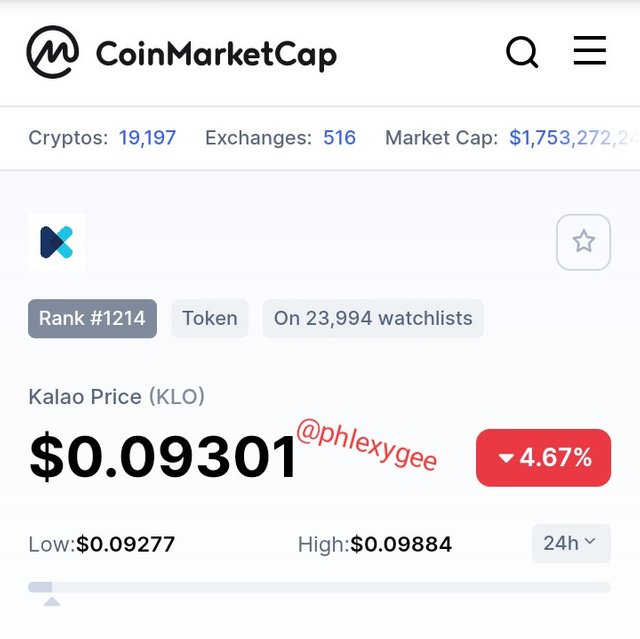 source
source
The status of KLO on coinmarketcap

Conclusion
Avalanche is a blockchain network that I love, due to the fact it has achieved scalability, security and decentralization simultaneously without compromising any.
The low transaction fees, creation of smart contracts for other blockchain projects and the 4500 TPS is amazing.
In fact, operating on the system is very fast and smooth, to the extent that it make one think that the platform is not a blockchain platform.
Click here to experience the high scalability and good things of Avalanche that I am talking about.
Thank you for spending your quality time to read this article.
Stay blessed. 😊
Note: some of the contents in this publication were directly copied from one of my initial publications, which can be found here
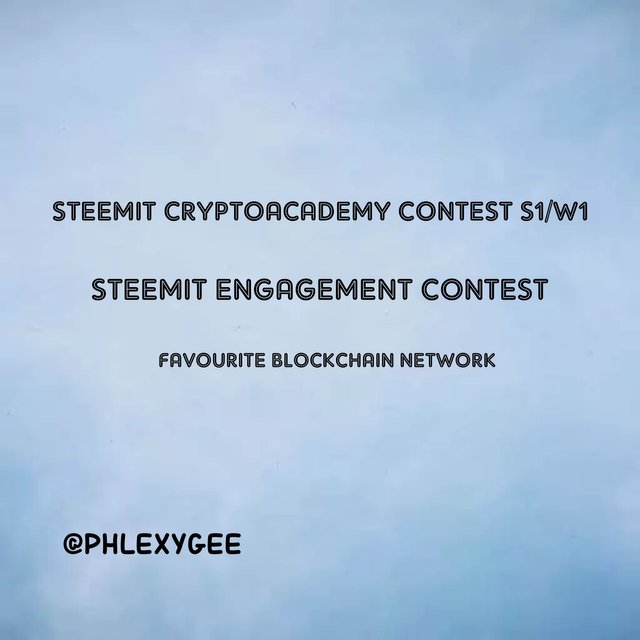
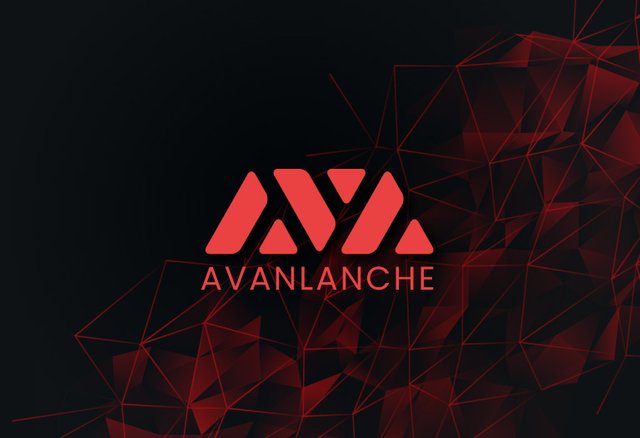
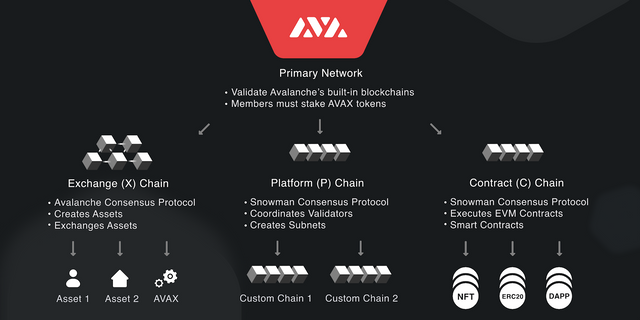
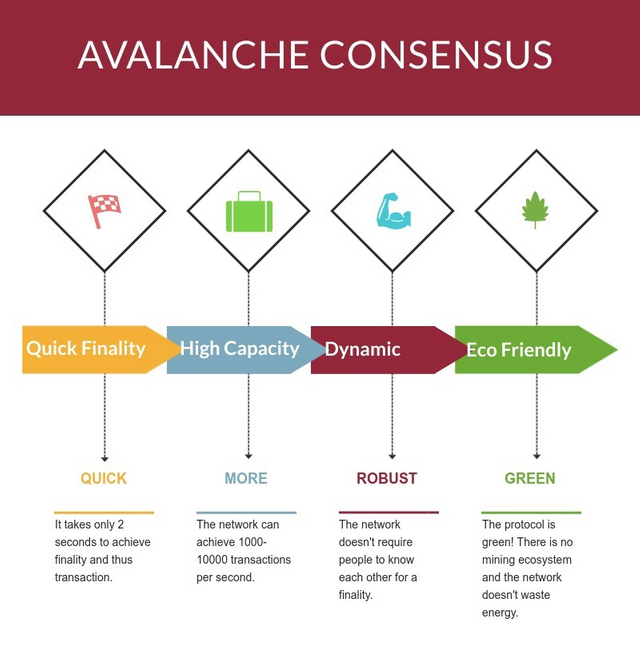
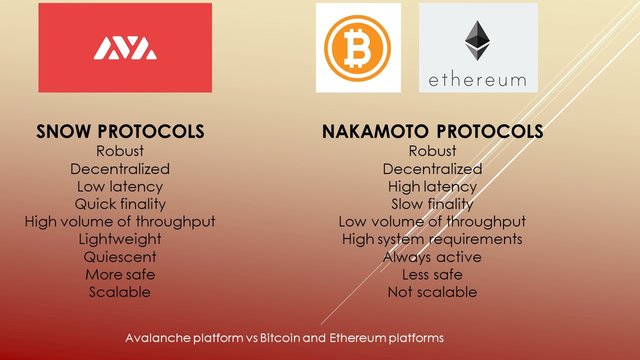.jpeg)
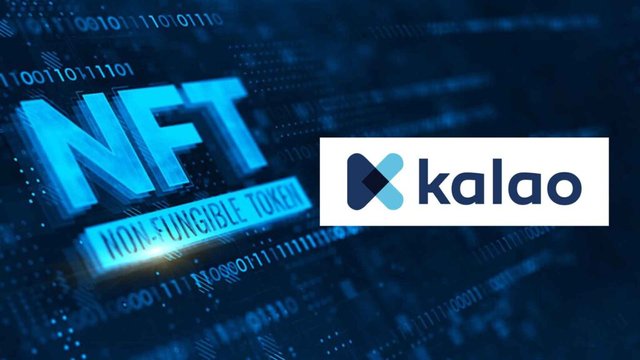
I learnt a lot from your entry. Nice piece of research 👌
Those are some of the things we gain from these engagement contests. We learn from each other to become well informed.
Thanks for coming through. 😊
Avalanche is an open-source blockchain platform for building dApps and customized blockchains, you did a great job by explaining the Avalanche Blockchain in detail keep it up and success
Thank you.
Definitely, I keep producing the good works.
You post has been properly written with all the right mark downs and explanations.
I have been able to learn Alot such as the snow man concensus protocol which is a linear order of mechanism.
Also your write up on kaolo is very detailed and conveys Alot of usefully information
Much love, bro.
I appreciate.
I really agree with you because avalanche is an example of modern day blockchain that seems to have conquered the blockchain trilema as the network is a very scalable network able to perform many transactions in seconds without congestion in cases of high demand and is also secured and decentralized so yea the avalanche network is a very nice network
It is indeed nice.
Thank you for testifying and giving feedback.
You are welcome
Well written to inform. I have heard of the AVAX coin but I never knew much about it. With this enlightenment, I’ve learnt great. 😊
You are welcome.
It was great reading your post, it made me want to invest in Avalanche
Wow, nice.
It is worth investing bro.